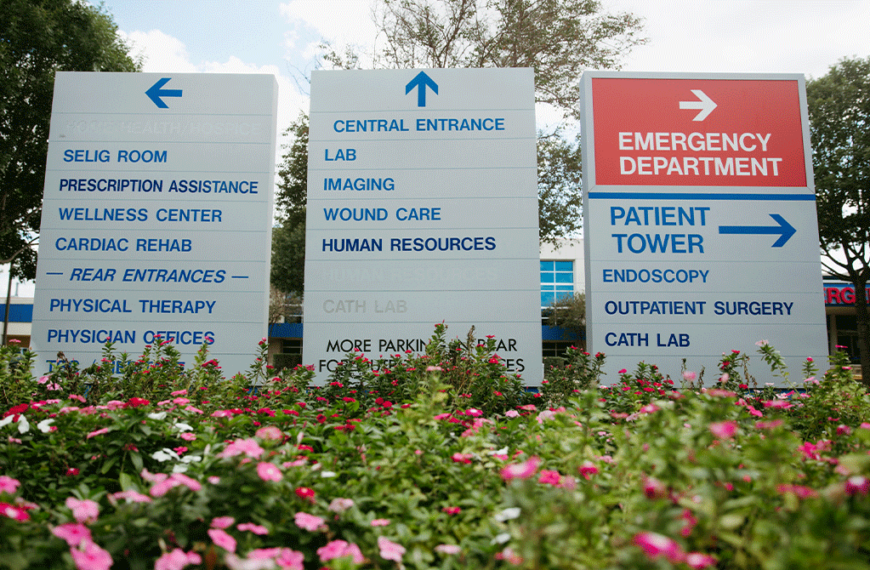For some time, rural hospitals – the facilities in our state facing the greatest threat to their existence – have needed help. This year, in several key ways, the Texas Legislature provided a helping hand. But there remains work to do.

Ensuring continued access to care in rural communities – from payment programs to the successful implementation of the new federal Rural Emergency Hospital designation – is essential to health care in those communities. So even after a successful session for rural care, we must remain focused on preserving and improving that access.
For some time, both data and rural hospital leadership on the ground have told the same story: Post-COVID-19, hospitals in rural communities are in trouble. Last year, a THA-commissioned study by Kaufman Hall found that 26% of rural hospitals in Texas were at risk of closing. Yes, that’s a quarter of these hospitals, and that number should be every bit as alarming as it sounds. It was at 16% in 2020.
Even before the pandemic, our hospitals dealt with workforce shortages, and those continued to worsen. Rural hospitals have seen the worst of those personnel shortfalls. The Kaufman Hall report found that only 40% of rural hospitals still provide labor and delivery services in Texas. An ominous headline early this year from the Texas Tribune describes a “maternity desert” due to staff shortages, causing entire maternity departments to shut down. The Tribune article detailed the environment Texans are facing in rural East Texas and beyond, with workforce and reimbursement continuing to be points of struggle. Another recent report from March of Dimes showed over 40% of counties in Texas are defined as maternity care deserts. Without ongoing and sustained assistance, many facilities would inevitably close, leaving Texans isolated without care for miles.
Thankfully, the attention to the needs of rural Texans was a high point during this session. THA and hospital advocates were able to secure several priorities to aid rural patients. Thanks to THA advocacy, lawmakers tripled Medicaid rural labor and delivery add-on payments from $500 per delivery in 2022-23 to $1,500 per delivery in the 2024-2025 biennium. Effective for Medicaid deliveries this coming September 1, this crucial funding bump will help maintain and hopefully even bolster communities’ access to obstetric services and ensure care can be delivered closer to home, improving care for mothers and their children.
The budget also allocated a significant inflation adjustment for rural hospitals to ensure legislatively required, cost-based reimbursement can be maintained, and $50 million in new funds for the Rural Hospital Stabilization Grant Program – a program that will be administered by the Texas Health and Human Services Commission provider finance department. These significant allotments reflect the importance rural Texas carries inside the Capitol, and of the strong advocacy on behalf of rural hospitals and their communities.
Now, in the wake of session, these facilities have another avenue that can help them stay afloat. For hospitals that continue to confront financial challenges but want to sustain caregiving services, the implementation of Rural Emergency Hospital (REH) licensure, authorized by federal Medicare authorities and freshly in effect for 2023, is also a new avenue for hope.
Congress created the REH designation to give a lifeline to rural communities when the hospital is facing impending closure. The idea behind REH, generally, is a tradeoff that preserves access to care: Rural hospitals are required to discontinue adult inpatient care while still providing emergency, observation and outpatient care. In some areas, maintaining inpatient beds is a prohibitively expensive cost – so the REH designation allows a hospital to transition its care levels, ensuring continued access for rural residents.
Along with the continued funding increases, our rural facilities need programs like this one, as access to care is an issue that grips Texans living in rural communities every year.
At THA, our advocacy has yielded results, but our rural health struggles are far from over. Rural care access remains a priority – for THA, and for both the federal and state governments – and we’ll continue to advocate for a spectrum of solutions and funding to help ensure access to care throughout Texas, especially in the most at-risk rural quarters of our great state.
Originally published in the Houston Medical Journal.
Aug. 22, 2023
Related articles from The Scope
Brad Holland: Rallying for Texas Hospitals
One year ago, THA was launching into the 2023 legislative session, ready to advocate for Texas hospitals with the pandemic receding further in the rearview mirror. While we knew the…
Show and Tell: Hosting a Lawmaker at Your Hospital
It’s one thing to tell a lawmaker what your hospital – and others – need from policymakers in order to thrive. It’s another thing entirely to show them. While getting…
Texas Hospitals Going Above and Beyond on Charity, Indigent Care
Everyone needs and deserves medical care. Texas hospitals understand that as well as anyone. And in a state with the country’s highest uninsured rate, where charity care and indigent care…
Keeping the Lifeblood Flowing: National Rural Health Day
The unique challenges of caring for populations tucked among open fields and rough two-lane roads haven’t lessened in the 12 years since National Rural Health Day came into being. In…




